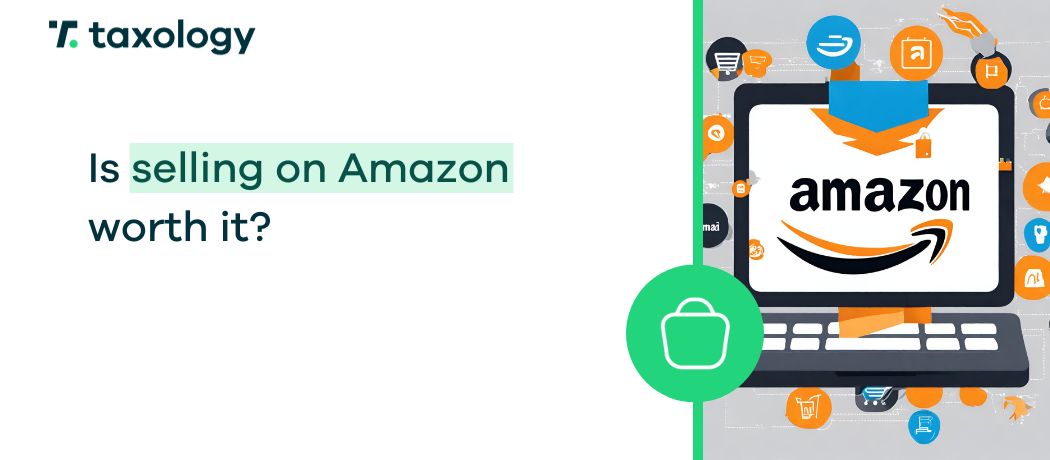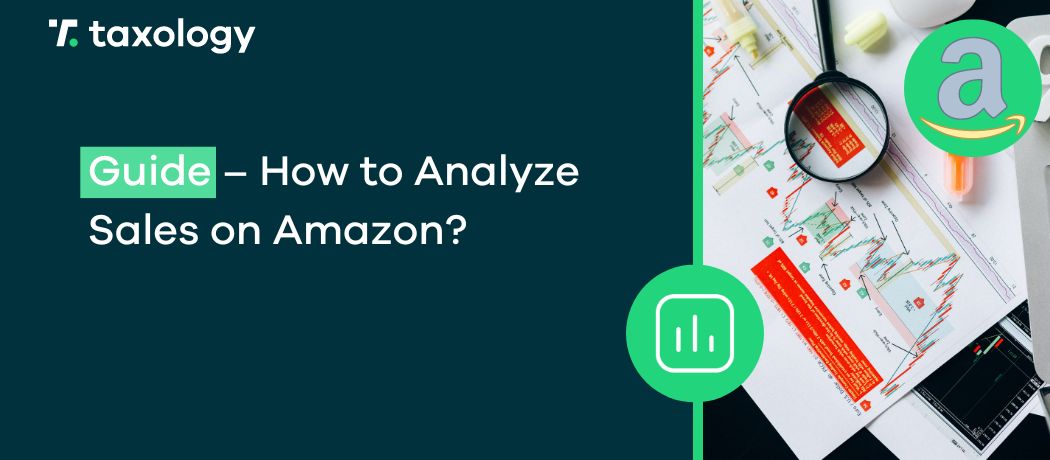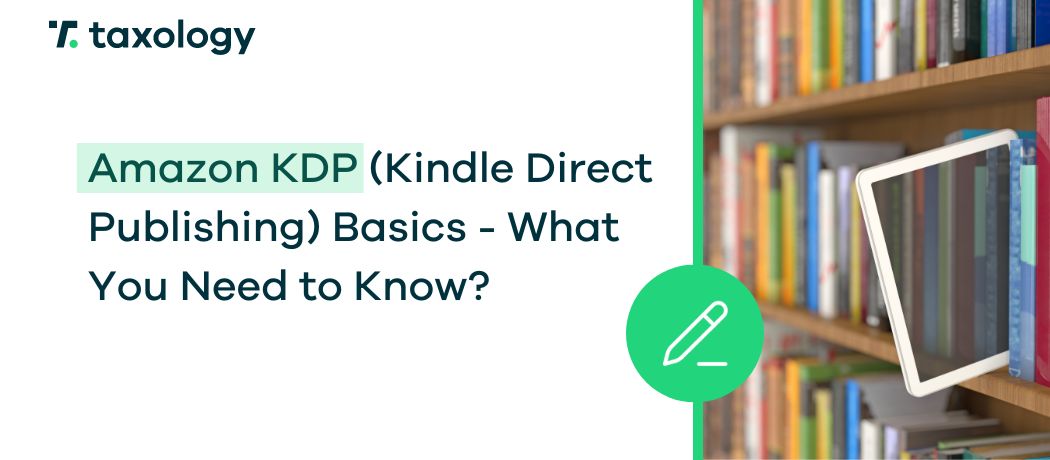Intellectual property protection is a very important topic in the e-commerce and cross-border e-commerce industry. Many sellers have encountered offers containing counterfeit versions of their original, manufactured products. Moreover, this […]
Read in: 6 minIs selling on Amazon worth it?
- Last update: 23.02.2024
- Published: 25.10.2022
- Read in: 5 min
In the last few years, the world’s largest marketplace has triggered an e-commerce gold rush. Year after year, Amazon has been opening up platforms in more markets, and sellers from a variety of countries and industries are becoming vendors, looking to use the marketplace to achieve ambitious sales targets, and especially to expand into more markets.
As is common in the gold rush, some are hugely successful, others give up after a while and some are even forced to close down sales by Amazon’s staff. So what does success on this platform depend on?
In this article, we will discuss the key factors that make it worthwhile (or not worthwhile) to start selling on Amazon.
Can I start selling on Amazon?
Before moving forward to whether it is worth selling on Amazon, we should first ask if it is even possible.
In most cases, the basic conditions, required to start selling, will not pose any problem for sellers. Sole traders and companies can sell on Amazon, and only basic contact and tax information is required to set up an account.
In addition, the marketplace strictly reserves the possibility to delete accounts that are linked to criminal activities, terrorist organisations or certain regimes (e.g. Iran and North Korea). More on who can sell on Amazon is outlined in the article Who can sell on Amazon.
Are my products eligible to be sold on Amazon?
In great detail, Amazon regulates what products can and cannot be sold on the platform, and these rules can significantly vary from one marketplace to another. This is mainly because they are closely linked to the regulations and even customary norms of the respective country. So the rules on the sale of gambling-related products, medicines and dietary supplements, or alcohol, for example, are significantly different, but minor differences can be found in many other categories, such as jewellery.
A large part of the underlying principles obviously overlap between markets. Most are aimed at protecting customers from fraud, harmful and low-quality products, as well as preventing criminal activity (e.g. the sale of counterfeit products).
When Amazon deems a product to be in breach of the terms and conditions, it can temporarily suspend or even completely close the seller’s account and refer the matter to law enforcement. We elaborate more on this topic in the article:
Is selling on Amazon a good idea in case of my business?
If we take a look at the product categories on Amazon, we can be under the impression that almost anything can be sold on this platform. And indeed, if a company’s product range does not violate any of the terms and conditions, it is safe to assume that succeeding on Amazon is possible. However, this does not at all mean that it is easily achievable. It is worth considering a few key points before embarking on Amazon.
1. Are we able to compete against other vendors?
Unlike many competing marketplaces, Amazon allows a single product to have only one card. When multiple vendors are selling the same item, Amazon’s algorithm will select only one of the vendors’ offerings as suggested in the so-called buy box, and others as alternative options. Which offering will be featured is determined by a number of aspects, such as:
- Price
- Time and cost of delivery to the given country
- Customer reviews and key statistics regarding customer service (e.g. response time)
- Low rate of returns and complaints
- High availability of the product
According to statistics, the suggested offers are selected by more than 83% of customers, so if the products we have are already sold by other retailers with a long history and impeccable reviews, it will be very difficult to compete with them.
Of course, this problem does not apply to sellers who have their own product brand and are not available on Amazon yet. In this situation, as the only vendors offering the items in question, we are automatically going to have a buy box.
2. Are we ready to expand into more markets?
This point is closely connected with the previous one, as it relates to product availability and delivery speed in each country. To be able to compete with other vendors and fully capitalise on the platform’s sales potential, often the best step is to use the FBA, or the Fulfillment by Amazon, sales model. It facilitates the storage and shipment of products via Amazon warehouses located throughout Europe.
By opting for this model, retailers can achieve swift delivery times across many European countries, which significantly increases the chance of securing buy boxes. However, it involves higher commissions, as under this model, Amazon is fully responsible for shipping or product returns.
This is not the only cost that sellers wishing to use the FBA model must face. According to current legislation, a seller who warehouses goods in another country must register and settle VAT in that country.
This requirement poses a major challenge for companies due to the lengthy registration processes and the considerable differences in tax laws across various countries. The fact that any delays or errors in VAT returns can result in hefty penalties being imposed by the tax authorities, adds further gravity to the matter.
If you are seeking a way to simplify this process and protect your company from potential mistakes, the best solution is to take advantage of the professional support of companies offering a comprehensive VAT compliance service. As part of this service, agencies specialising in this area take responsibility for guiding companies through this VAT registration and timely filing of VAT returns.
For example, in cases where we offer a proprietary product and are not in competition with other vendors, a possibility may be to dispatch goods from warehouses located in the country of the company’s headquarters. In such a situation, it is necessary to keep in mind the so-called EU mail order limit. When you exceed the amount of €10,000, in sales to member states in a calendar year, you also have to settle VAT in the respective countries or use the simplified VAT OSS procedure.
3. Are the costs of selling on Amazon too high for you?
Selling on Amazon, especially under the FBA model, involves a number of new costs and procedures that some sellers may not be ready for, especially if they have a product range with insufficient margins. Whatever your situation, you must be aware of all Amazon fees and commissions, but wait, there’s more.
Depending on your strategy, the number of markets, and your sales model, other costs may include:
- The need to translate offers and provide customer service in other languages
- Marketing costs (e.g. cooperation with agencies specialising in Amazon sales)
- Costs related to registration and VAT settlement in other countries
- Costs related to managing warehouses in multiple countries
Additional charges apply also for recalls, customer returns and even for listing very high numbers of new products.
We explore this topic in detail in the article:
How much is Amazon’s commission and what other costs do sellers incur?
My business is Amazon-ready
Although the requirements outlined in this article may sound a little discouraging, our experience of working with hundreds of e-commerce companies shows that in most cases its a great channel that often becomes a major source of revenue.
Of course, each business requires an individual approach and a strategy to safely launch and sell in additional markets. As experts in the registration and VAT settlement process in multiple countries, we take full responsibility for the entire VAT compliance process so that our clients can focus on growing their sales.
If you are considering professional support in this area, please schedule a consultation with us.
Learn also all you need to know about Amazon FC Processing and FC Transfer.




